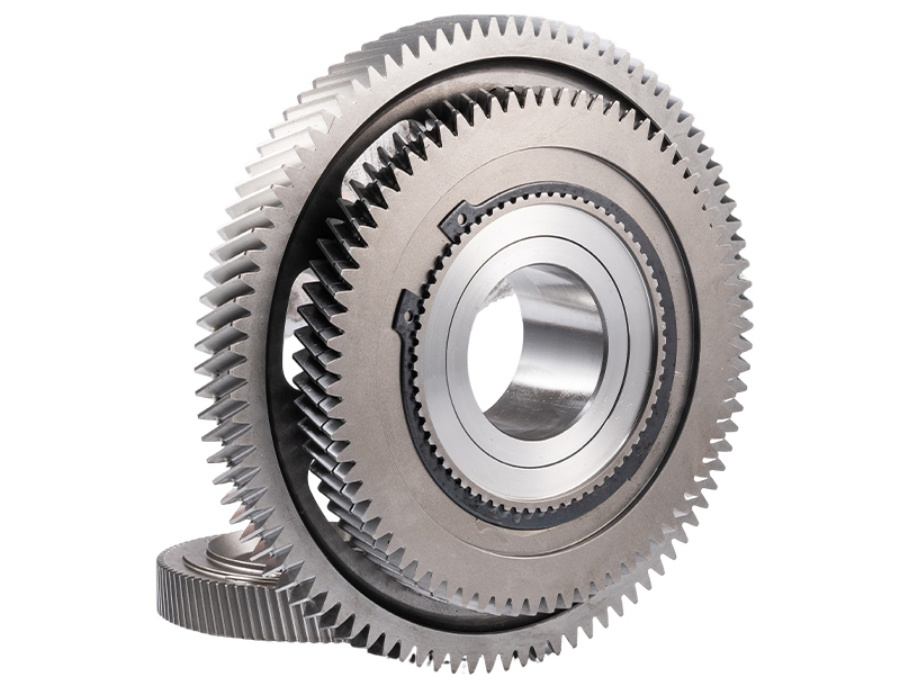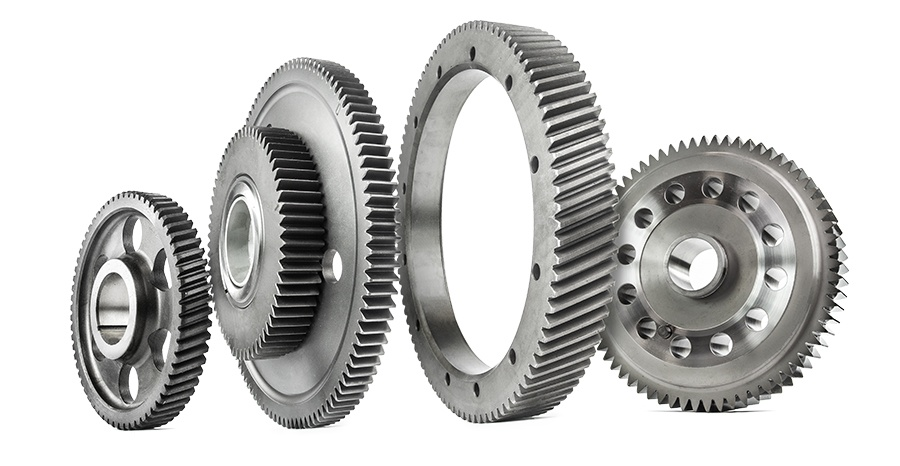In the engine system of special vehicles such as heavy trucks and engineering vehicles, gears are core transmission components, and their precision and performance directly determine the stability of power output, fuel economy and vehicle life. In recent years, with the ultimate pursuit of long-distance transportation efficiency in the logistics industry, 5-6 grade high-precision gears have gradually become the "gold standard" in the field of special vehicle engines due to their low noise, high load, and long life. This article will analyze how this precision transmission component reshapes the modern transportation industry from four dimensions: technical principles, manufacturing processes, application scenarios and industry trends.
1. Technical core: "precision gene" of 5-6 grade precision gears
According to international standards (GB/T 10095.1-2008), gear precision is divided into 12 levels, of which 5-6 levels belong to the category of high precision. Its core advantage lies in the ultimate control of transmission error:
Dynamic performance optimization: The cumulative total deviation (Fp) of the pitch of 5-grade precision gears is ≤0.012mm, and the 6-grade precision is ≤0.018mm, which is more than 40% lower than that of traditional 7-grade gears. This improvement in precision can significantly reduce the impact load during gear meshing, control the engine speed fluctuation within ±0.5%, and ensure the linear and stable power output.
Breakthrough in noise suppression: By optimizing the tooth profile modification (such as drum modification, helix angle modification) and tooth error compensation, 5-6-grade gears can reduce the meshing noise to 65-72 decibels (dB), which is 8-10dB lower than ordinary gears. Taking the Sinotruk HOWO A7 dump truck as an example, the 5-level precision intermediate gear assembly (VG1246050060) equipped with it has a 9dB reduction in engine idling noise compared with the previous generation of products in actual testing, which is equivalent to reducing the environmental noise when the truck is driving from "noisy streets" to "quiet offices".
Fatigue life leap: The tooth surface roughness (Ra) of high-precision gears can be controlled at 0.2-0.4μm, and with the carburizing and quenching process (hardness HRC58-62), its contact fatigue strength is increased by 30% and bending fatigue strength is increased by 25%. In the long-distance actual test of Shaanxi Automobile Delong F3000 heavy truck, the tooth surface wear of the 6-level precision half-axle gear (199114320032) was only 0.01mm after continuous operation of 800,000 kilometers, which is far lower than the industry average replacement standard of 0.03mm.
2. Manufacturing process: the leap from "millimeter level" to "micrometer level"
To achieve 5-6 level precision gear manufacturing, it is necessary to overcome the three major technical difficulties of materials, processing and testing:
Material revolution: using low-carbon alloy steels such as 20CrMnTi and 18CrNiMo7-6, through vacuum carburizing and quenching process, a hardened layer of 0.8-1.2mm is formed on the tooth surface, and the core maintains good toughness. For example, the Cummins NT855 engine gear (4953332) uses 18CrNiMo7-6 steel. After double-frequency quenching, the uniformity error of the tooth surface hardness is ≤0.5HRC, which effectively avoids early failure caused by local stress concentration.
Processing precision control:
Gear grinding process: using high-precision gear grinding machines such as Y7431 and Y7150, and achieving tooth shape error ≤0.003mm through CNC development method. Jinan Linghang Auto Parts Co., Ltd. developed a crankshaft gear (VG14020038) for Sinotruk HOWO dump trucks, which uses five-axis linkage grinding technology to control the tooth error within ±1μm.
Heat treatment deformation compensation: The quenching deformation is simulated by finite element analysis (FEA), and the gear blank is pre-deformed. Shiyan Dongfang Express New Energy Auto Parts Co., Ltd. applied this technology in the production of Yuchai natural gas engine timing idler gear (L3000-1002051) to make the gear normal length change after heat treatment ≤0.008mm.
Intelligent detection system: Integrated gear measurement center (such as Gleason Phoenix 600G), laser interferometer and other equipment, full-dimensional detection of 12 parameters such as pitch, tooth profile, helix, etc. The test report of Sinotruk Howard Dragon series planetary gear (199012320010-27) shows that its single-tooth meshing spectrum noise peak is 15dB lower than the industry average, confirming the industry-leading manufacturing accuracy.
3. Application scenario: "power heart" of long-distance transport trucks
In the long-distance transport scenario with an average daily mileage of more than 800 kilometers, the value of 5-6 grade precision gears has been fully verified:
Improved fuel economy: High-precision gears can reduce the internal friction loss of the engine by 5-8%. Taking a heavy truck with an annual mileage of 200,000 kilometers as an example, based on the unit price of diesel at 7 yuan/liter, the annual fuel cost can be saved by about 12,000 yuan.
Enhanced reliability: In the extreme environments of the Yunnan Plateau (2000-3000 meters above sea level) and the Xinjiang Gobi (40°C temperature difference between day and night), the failure rate of 5-6 grade gears is 60% lower than that of ordinary gears. The application data of C&C Truck A3100-1005021B crankshaft timing gear on Yuchai natural gas engine shows that its MTBF (mean time between failures) reaches 12,000 hours, which is 40% higher than the industry average.
NVH performance optimization: By optimizing the gear modulus (usually 2.5-4mm) and helix angle (15°-20°), 5-6 gears can effectively suppress the medium and high frequency noise in the 2000-4000Hz frequency band. The 6-level precision reduction gear (Z42) equipped in Foton Auman EST super truck has an internal noise of only 68dB at a speed of 90km/h, reaching the passenger car level quietness standard.
4. Industry Trend: Dual Evolution of Intelligence and Lightweight
Facing the dual pressures of "dual carbon" goals and transportation efficiency improvement, special vehicle engine gears are evolving in the following directions:
Intelligent lubrication technology: An intelligent lubrication system with integrated pressure sensors and solenoid valves can dynamically adjust the injection amount according to the gear load. For example, Eaton's heavy-duty truck gear valve (A-4740) uses this technology to reduce gearbox lubricant consumption by 30%, while reducing the risk of tooth surface pitting caused by insufficient lubrication.
Lightweight design: Titanium alloy (TC4) and powder metallurgy (PM) processes are used to reduce the weight of gears while ensuring strength. The Z30 drive gear developed by Shandong Mianchi Trading Co., Ltd. is 25% lighter than traditional steel gears through topological optimization design, while fatigue life is increased by 15%.
Digital twin manufacturing: Based on the three-dimensional model of the gear and the processing process data, a digital twin is constructed to achieve real-time optimization of process parameters. After Jinan Xinao Chuang Auto Parts Co., Ltd. applied this technology in the production of half-axle gears, the product's first-time pass rate increased from 92% to 98%, and the manufacturing cycle was shortened by 20%.
Precision transmission drives the future
From Sinotruk's HW19710XS helical gearbox to Cummins' ISBe engine idler gear, 5-6 precision gears are supporting the "millimeter-level" power control needs of special vehicles with "micrometer-level" precision. Against the backdrop of cost reduction and efficiency improvement in the logistics industry, this precision transmission component is not only a symbol of technological progress, but also a vivid footnote to the transformation of Made in China to "Smart Manufacturing in China". In the future, with the deep integration of new materials, new processes and intelligent technologies, special vehicle engine gears will continue to promote the efficiency revolution in the transportation industry with higher precision, lower energy consumption and longer life.


